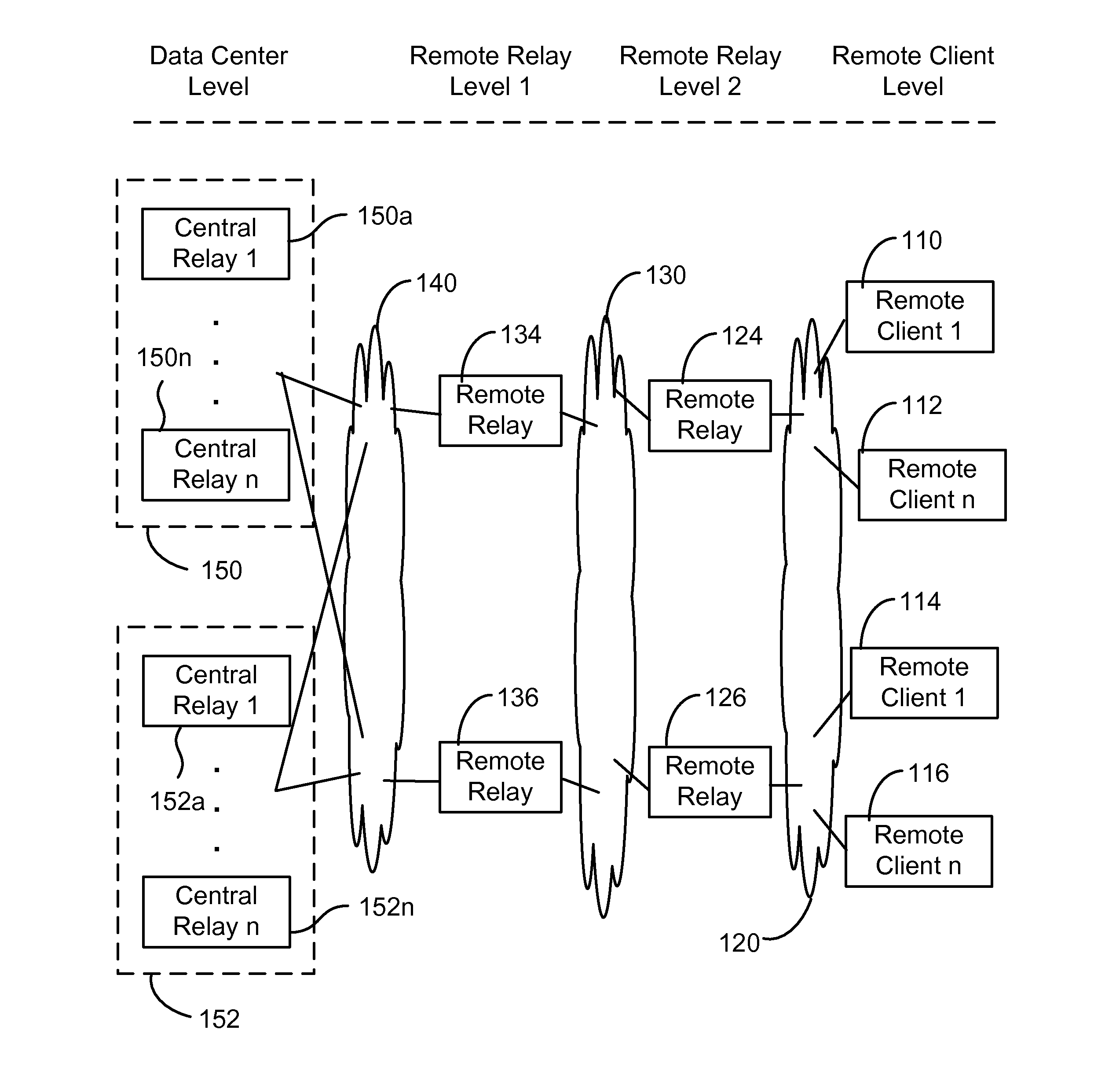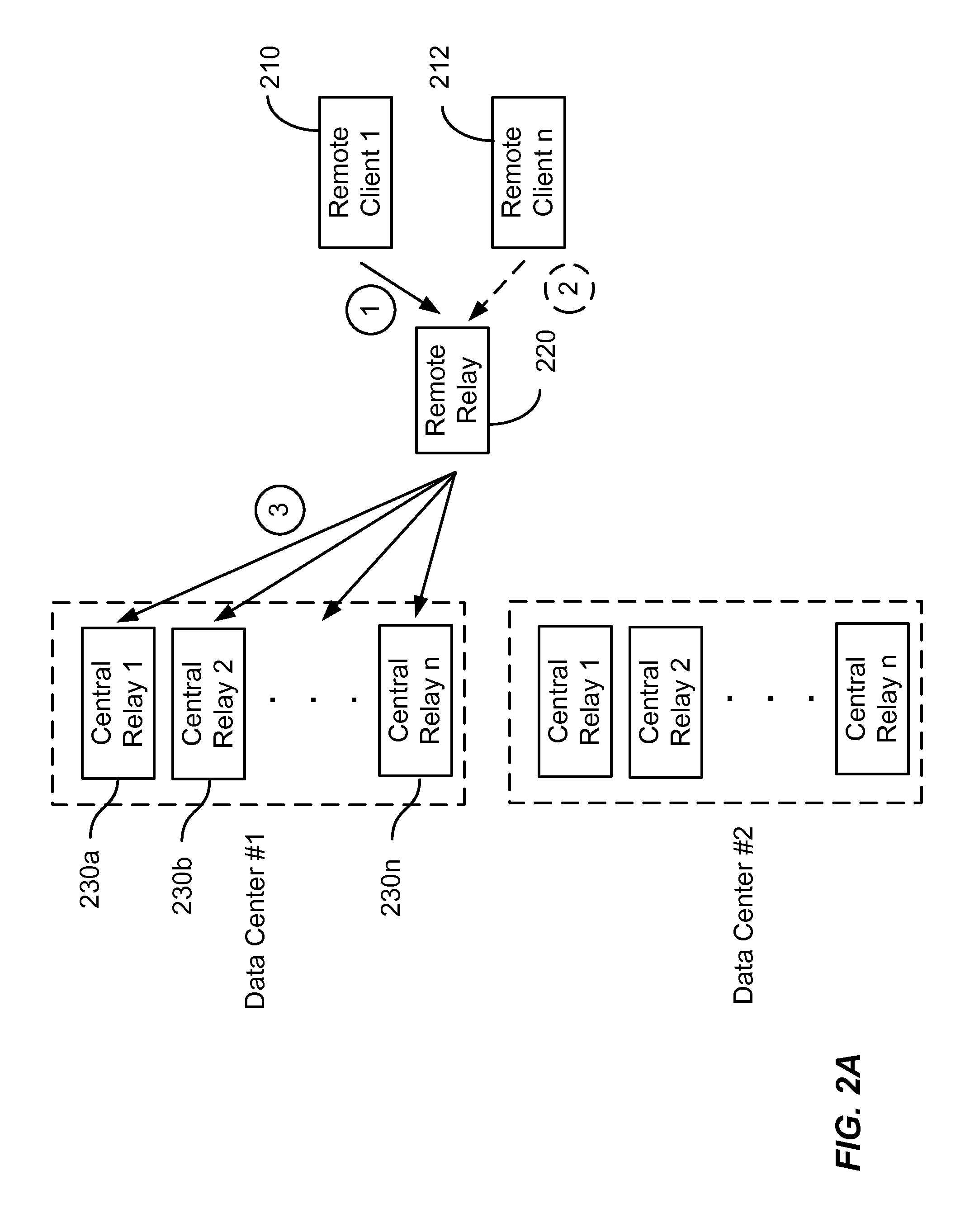Method and system for application level load balancing in a publish/subscribe message architecture
a message architecture and application level technology, applied in the field of method and system for application level load balancing in the publish/subscribe message architecture, can solve the problems of often lost benefits of the publish/subscribe system, and achieve the effects of reducing system complexity, enhancing security, and reducing the number of connections from remote sites to central sites
- Summary
- Abstract
- Description
- Claims
- Application Information
AI Technical Summary
Benefits of technology
Problems solved by technology
Method used
Image
Examples
Embodiment Construction
[0020]As discussed above, typical publish and subscribe systems are one-level implementations in which a server interacts with subscribers and publishers. Each subscriber submits subscription requests to the server and each publication request is also submitted to the server. A drawback of using a conventional one-level system is that each client (either publisher or subscriber) is connected to the server, which results in a large number of connections between the clients and the server. The large number of connections, in turns, results in complexity in configuring, maintaining, and running the network on account of firewall rules, configuration of multiple logical paths, and the like.
[0021]Embodiments of the present invention utilize a hierarchical structure that reduces the number of connections from clients to central sites, for example, by an order of magnitude. Reducing the number of connections reduces the complexity of the network and associated configuration and maintenance...
PUM
 Login to View More
Login to View More Abstract
Description
Claims
Application Information
 Login to View More
Login to View More - R&D
- Intellectual Property
- Life Sciences
- Materials
- Tech Scout
- Unparalleled Data Quality
- Higher Quality Content
- 60% Fewer Hallucinations
Browse by: Latest US Patents, China's latest patents, Technical Efficacy Thesaurus, Application Domain, Technology Topic, Popular Technical Reports.
© 2025 PatSnap. All rights reserved.Legal|Privacy policy|Modern Slavery Act Transparency Statement|Sitemap|About US| Contact US: help@patsnap.com



